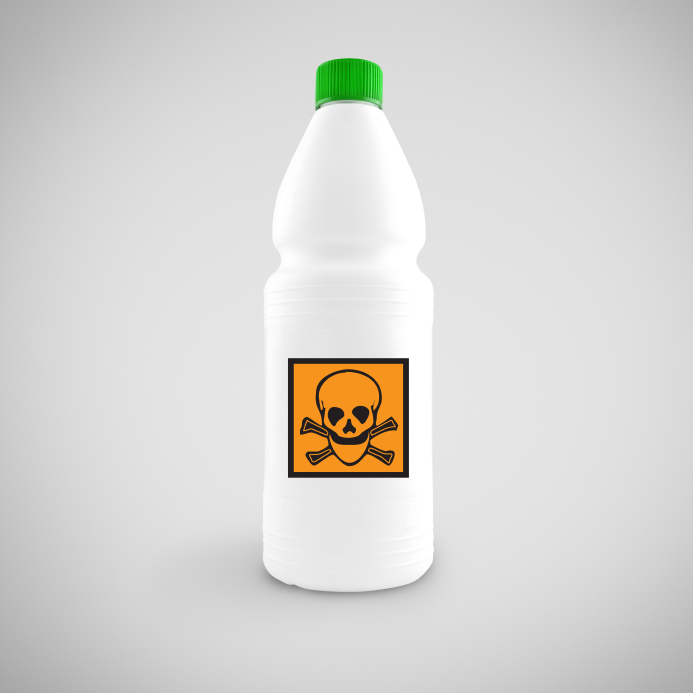 |
Anhydrous ammonia is ammonia gas—the anhydrous part means “without water.” It is colorless, but has a very pungent smell. It can be irritating at lower levels, but very damaging at higher levels. Exposure to anhydrous ammonia between 5 and 50 parts per million (ppm) can cause headaches, loss of the sense of smell, nausea, and vomiting. Concentrations above 50 ppm result in irritation to the nose, mouth, and throat causing coughing and wheezing. Concentrations of 300 to 500 ppm are immediately dangerous to life and health. Anhydrous ammonia is also highly flammable and explosive.
Anhydrous ammonia is widely used in agriculture as a fertilizer. It is also typically used in refrigeration systems in a number of industries, including:
- Cold storage warehouses, and ice plants,
- Meat, poultry, or fish processing centers,
- Dairy and ice cream plants,
- Wineries and breweries,
- Fruit/vegetable juice and soft drink processing facilities, and
- Petrochemical facilities.
Part of the danger of anhydrous ammonia use is that it is usually stored in tanks at high pressure. Hazards include explosions and leaks. Leaks can occur in the tank, but also in the connections, valves, and fittings.
According to the U.S. Environmental Protection Agency (EPA), factors causing ammonia releases equipment failure can be divided into four areas:
- Equipment failure–70%
- Human error–26%
- Unusual Weather–2%
- Other (e.g., vehicular impacts)–2%
Both OSHA and EPA regulations govern the management of anhydrous ammonia. This article, though, will focus not on the regulations themselves, but on BMPs that you can use to avoid explosions and leaks if your facility stores anhydrous ammonia.
Forget expensive calls to lawyers and consultants. With Enviro.BLR.com, you get instant access, 24/7. Try it out today and get the 2015 EHS Salary Guide, absolutely free. Download Now.
21 BMPs for Storing Anhydrous Ammonia
Operation and Maintenance
- Develop operating procedures and require refrigeration operators and maintenance personnel to review and follow the operating procedures before performing routine tasks (e.g., adding ammonia).
- Develop and maintain a preventive maintenance program. A preventive maintenance program and schedule, based on the manufacturer’s recommendations, should be prepared for each component of a refrigeration system.
- Monitor the ammonia refrigeration system on a routine basis. Many facilities use a Daily Engine Room Log for recording the refrigeration system’s various process temperatures, volumes, vibrations, lubrication levels, and pressures at least once per operating shift.
Everything You Need for Environmental Compliance
Enviro.BLR.com puts everything you need at your fingertips, including practical RCRA, CAA, CWA, hazardous waste regulatory analysis and activity, news, and compliance tools. Try it at no cost or risk and get a FREE report.
- Keep track of inventory. Keep an accurate record of the initial amount of ammonia purchased and any additional replacement charges of ammonia. These data are not only critical for trend and operations analysis, but it is also necessary to determine if system-wide ammonia releases are occurring. Also, if your facility uses more than 10,000 pounds of ammonia in a calendar year, you may be required to report it under EPA’s community right to know regulations and develop a risk management plan under the Clean Air Act.
- Remove refrigeration oil. For proper system maintenance, refrigeration oil should be removed from the refrigeration system on a regular basis. The presence of excessive refrigeration oil in the refrigeration system will be realized only if a facility is recording the volume of oil added and removed. Extreme caution should be taken to ensure that oil is never directly removed from a refrigeration system without first pumping down and properly isolating that component. Since this procedure may be the most dangerous function an operator performs on a regular basis, a facility should seriously consider the installation of 1/4 turn, self-closing ball, or globe valves (dead-man valves) at all oil draining points to prevent possible accidents during an oil draining procedure.
- Replace pressure relief valves (PRVs). PRVs should be replaced on a regular schedule, at least every 5 years. Document the replacement date.
